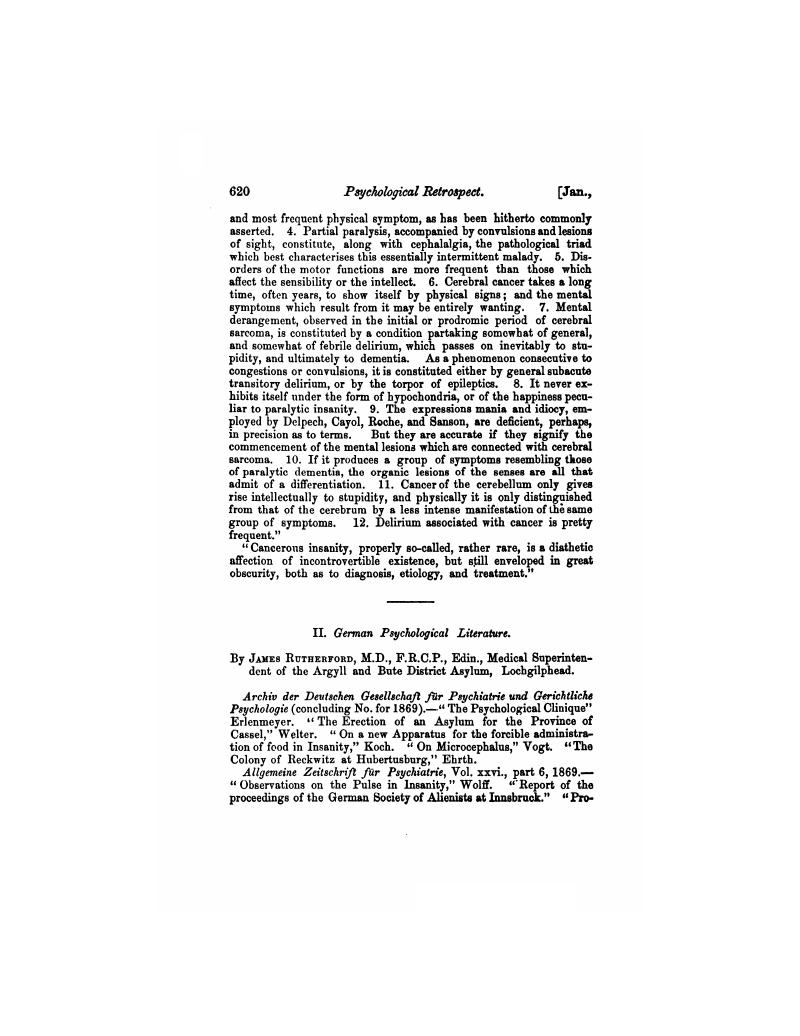No CrossRef data available.
Published online by Cambridge University Press: 19 February 2018

∗ It may be here mentioned that in many parts of Germany the women work in the fields, while the men are employed at their trades.Google Scholar
∗ Dr. Brosius paper, and the discussion upon it, betray grave misapprehension on the part of our German brethren of the principles of the non-restraint system. To argue that a patient is to be allowed to indulge an insane propensity, such as denuding himself, because he feels intensely miserable, unless allowed to do so, is to lay down a principle which would render our practice in troublesome cases very easy. Perhaps Dr. Brosius may have had under his care patients who manifested an intense anxiety to lie in bed all day, under the impression that he was near his confinement, or who persisted in refusing animal food, and eating only fruit, in order to feed a nest of young squirrels in his stomach. Would he allow him to gratify an insane propensity, or a perverted taste, because it pleased him, and that probably after a time the inclination would pass off? The nop-restraint system treatment is the scientific combating of morbid mental manifestations by medicinal means and moral agency; by medicines administered etiological 1 y and palliatively; by moral agency, such as that which a parent has over a child, or master over a servant; by which the majority of the patients in a large institution would not, if they could, pass beyond the boundary line of the asylum grounds. We consider that to place a patient in solitary confinement during the day in a small strong room is a violation of the principle of non- restraint, and believe the day to be not far distant when prison-like courts, padded rooms, and seclusion-even in a state of nudity-will be as much things of the past as the camisole and the restraint chair.Google Scholar
eLetters
No eLetters have been published for this article.